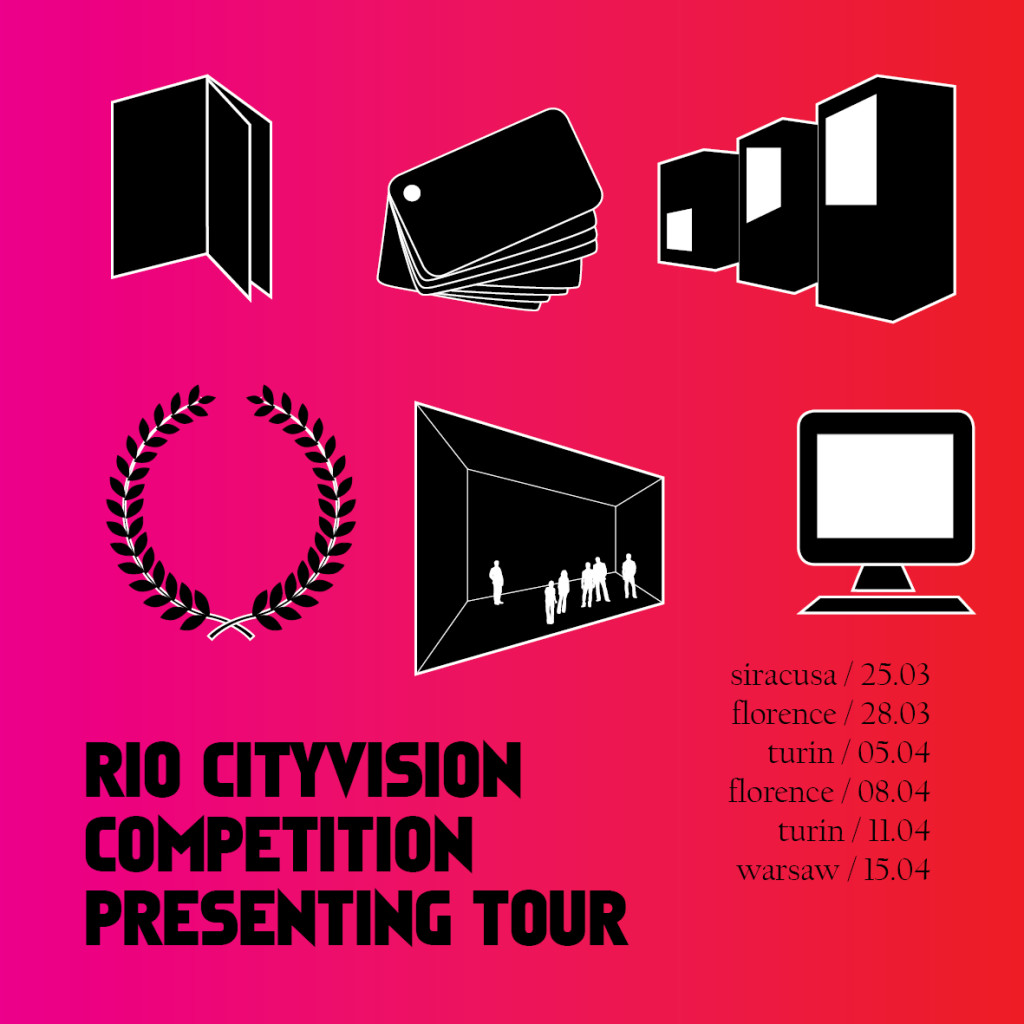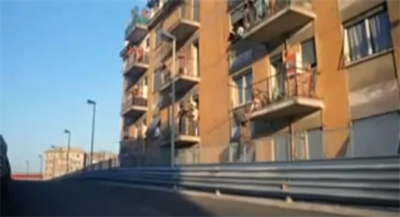Most POPular buildings : Rome
text by Sebastian Di Guardo
Roma! Terra promessa, Gerusalemme del cielo dai palazzi lucenti, capitale, il meglio dell’architettura italiana di tutte le epoche. Sono passati degli anni, ero uno studente fresco di trasloco dalla Sicilia e per prima cosa si imponeva un’esplorazione di questa meraviglia, occorreva cioè chiedersi quali sono gli edifici più popolari di questa città, quale tipologia ha coinvolto il gusto, su quali occorre puntare i riflettori… quali sono i modelli più diffusi, ricercati dal pubblico, quelli che dovevo studiare, riconoscere, riparare, modificare? Da allora posso dire di aver girato Roma in lungo e in largo, un po’ per lavoro, un po’ per turismo, e come Nanni Moretti sulla sua Vespa ho incontrato la mia Sora Lella e la mia Jannifer Beals, sempre domandando, entrando nelle case, imbucandomi alle feste, appuntando; questo il risultato: gli edifici più POP di Roma sono…quelli popolari.
Sembra che la moda più incisiva, persistente, glamour(!!) in questa città sia stata il fenomeno di massa delle palazzine, delle case a basso costo. Vanno a ruba, le agenzie immobiliari si strappano i capelli per questi appartamenti enormi, full optionals, dal prezzo salito alle stelle con la valutazione per metri quadri (le stanze erano grandi, ci si stava in più persone) e le new metro lines; si cacciano le vedove degli operai che le hanno abitate per decenni con foto sbiadite, scarafaggi e ragnetti annessi, si inaugurano mostre su di loro nei musei;chic nei dettagli, status symbol di generazioni intere, sogno proibito di migliaia di precari di oggi. Rigenerate dal dirompente slancio creativo di life stylers – Quaroni, Fiorentino, Ridolfi tra gli altri – capaci di progettare palazzi, vie, parchi e persino sgabuzzini incredibilmente POPular, di creare il POPular, queste abitazioni si sono diffuse ovunque in serie ripetitive meno pregiate, come il rock dai Led Zeppelin degli anni ’70.
Sono ovunque: San Paolo, Tiburtino, Torre Spaccata, Vigne Nuove, Tor Bella Monaca, Laurentino, Corviale, Ponte di Nona ecc ecc. Il popolo le ha volute: si sono costituite società come l’INA Casa, sono state erogate leggi e condoni e piani PEEP che con regolare cadenza hanno aiutato “il palazzinaro” a salire fino alla vetta sociale, a costruire quartieri e brani di città attorno a poli attrattivi oppure a colonizzare nuovo suolo. Ambiente, paesaggio, servizi, mezzi pubblici, a volte sono stati ignorati dai nostri POP-heroes, che hanno creato quel miracolo-italiano-a-tutti-i-costi che dalla nostra epoca recessiva ci appare lontano. Il biscazziere dà le carte, e il piatto non piange mai; il conto è sempre salato, ma il gioco è l’anima del popolo e il POPolo è sovrano. Cosa rimane oggi? L’indifferenza dei percorsi accademici di ricerca nei loro confronti, a fronte del fatto che nella professione parli sempre di loro: in fondo sarebbe come se Versace o Tommy Lee considerassero tutte le sottomarche che vendono magliette al mercato rionale.
Ci si deve vergognare di buona parte delle nostre città? Occorre demolirle? Oppure riprendere con slancio creativo, imparare da quel vecchio stile Vintage e dargli sostenibilità e coesione con il paesaggio ed il contemporaneo, comprendere le dinamiche dei flussi urbani che non possono essere ancora quelli “fantozziani” dei ponti sulla Prenestina sui quali il personaggio di Villaggio si lanciava direttamente dalla finestra sull’autobus. Magari occorre anche un po’ di cinismo, di coraggio, di senso pratico: serve aprire una scatola chiusa dagli anni ’70, anche se puzza di cemento? L’importante è che il tutto sia sempre, rigorosamente, POPular.
Rome! Is like the promised land, is like the heavenly Jerusalem from the palaces shining, the capital, the best Italian architecture of all times. Lot of years are past, I was a student freshly removal from Sicily and the first thing required is an exploration of this wonder, it was necessary to ask what are the most popular buildings in this city, what type involving taste, what we need to focus the spotlight … what are the most popular models, sought after by the public, who had to study, identify, repair, modify? Since then I can say I shot in Rome far and wide, for business and for pleasure, and as Nanni Moretti on his Vespa I met my Sora Lella and my Jannifer Beals, always wondering, entering into every house, coming secretly to parties, pinning, and this is the result: more POPbuildings of Rome are … popular buildings.
It seems that fashion is more effective, persistent, glamorous (!!) In this city has been the mass phenomenon of low cost buildings and houses. Are selling, estate agents, tear their hair for these huge apartments which are full optionals. The price of them has gone up enormously from the square meters evaluation (the rooms were large, there was more people) and thanks to the new metro lines. The widows of workers who lived here for decades are hunted and faded photographs are thrown with cockroaches and spiders attached; exhibitions were inaugurated on them in museums. They are chic in the details, status symbol of generations, wet dream of thousands of precarious workers today. They were reclaimed from the explosive creative energy of life stylers – Quaroni, Fiorentino, Ridolfi among others – able to design buildings, streets, parks and even closets incrediblyPOPular, to create POPular. These houses have spread everywhere in repetitive series less valuable, as the rock of Led Zeppelin 70s.
This type of building is everywhere: San Paolo, Tiburtino, Torre Spaccata, Vigne Nuove, Tor Bella Monaca, Laurentino, Corviale, Ponte di Nona etc etc.. The people wanted them: they were created companies such as INA Casa; amnesty, laws and “PEEP” plans regurarly helped the “palazzinaro” (the speculator) to climb the social ladder by building neighborhoods and parts of the city, they are built around a pole of attraction or colonizing new ground. Environment, landscape, services, public transport, have sometimes been ignored by our POP-heroes, who have created this Italian-miracle-at-all-costs from our recession era seems far away. The gambler gives the cards, and the dish never cries, the count is always salty, but the game is the soul of the people and the POP are sovereign. What remains today? The indifference of the university courses to search for them, in view of the fact that in the profession you’re always talking about them. Besides it would be like Versace and Tommy Lee regarded all the under-brands that sells t-shirts at the local market.
Shall we shame of our cities? Shall we demolish them? Or take up with creative drive, to learn from the old-fashioned Vintage and give sustainability and cohesion with the landscape and the contemporary. Need to understand the dynamics of urban flows, which can not yet be those of “Fantozzi” the Paolo Villaggio character is launched directly from the window on the bus going from the Prenestina road bridges. Maybe you also need a bit ‘of cynicism, of courage, of common sense: in order to open a locked box from the 70s, even if it stinks of concrete? The important thing is that everything is always strictly POPular.
Info:
Info:
Title: Most POPular buildings : Rome
Time: 8 marzo 2013
Category: Article
Views: 8616 Likes: 2
Tags: -








